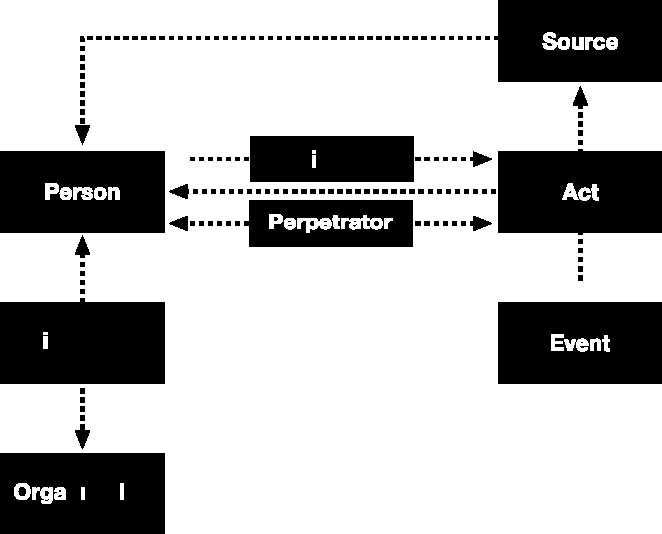 |
News | Sport | TV | Radio | Education | TV Licenses | Contact Us |
 |
News | Sport | TV | Radio | Education | TV Licenses | Contact Us |
TRC Final ReportPage Number (Original) 323 Paragraph Numbers 8 to 17 Volume 1 Chapter 11 Part OtherDepts Subsection 3 ■ THE DATABASE8 The Commission’s database was the backbone of the information flow. All human rights violations statements and amnesty applications were loaded onto the database. 9 The database was designed and built from scratch by a small team consisting of consultants from Oracle Corporation, the information systems manager and a researcher. It was based on a design by a consultant from the American Association for the Advancement of Science, who specialises in the recording of human rights violations data. The design also drew on the work done by the Human Rights Documentation and Information System (Huridocs). 10 The database was designed on the assumption that any narrative description of human rights violations could be broken up into a series of time- and place-specific acts of violence, succinctly summed up in the phrase ‘who did what to whom’. For example, an activist may have had his or her house burnt down, then been detained in solitary confinement before being subjected to electric shock treatment. These would be recorded as three separate violations - arson, detention and torture - as opposed to recording the incidents as a composite violation (‘the harassment and torture of Mrs X’). 11 This positivist approach allowed for more complex quantitative analyses to be carried out, to supplement the normal qualitative analysis to which narrative data are usually subjected. For example, by recording detention separately from torture, one could analyse the incidence of torture in the context of detention. If a strong correlation was shown to exist, this in turn informed policy recommendations about detention, to prevent a recurrence of the circumstances or conditions that give rise to the torture of prisoners. 12 The approach of breaking up the data into logical components lent itself to implementation on a relational database, which was why Oracle software was chosen. Once the logical model of the database was finalised, it was built in record time (it took exactly one month from the start of the design phase until it was ready for use by the Commission’s data capturers). 13 The central part of the database design was a tabular list called ‘Acts’, which recorded the actual substance of the violation: the victim, the place, the date and time, the nature of the violation and the human rights violation category into which it fell (for example, attempted killing, torture, abduction, severe ill-treatment). Each violation committed by one or more perpetrators was recorded in a separate table called ‘Perpetrators’. An act that could have been witnessed by one or more people was also recorded in the ‘Witnesses’ table. 14 The Commission’s database was an advance on other such models because it allowed for people to be victims, perpetrators and witnesses at the same time. People were only defined as victims, witnesses or perpetrators in the context of the violation itself. This is illustrated in the diagram below, where the personal details of people (names, identification numbers, addresses) appear together in a separate table called ‘Persons’. By searching the table for a name, users were able to find the person irrespective of whether they were a victim, a witness or a perpetrator. This represented the real South African context much more realistically, since it was entirely possible that an individual could have been victimised and then perpetrated an act of violence in revenge and, thus, could have been both a victim and perpetrator. DIAGRAM 2.1UNDERLYING LOGICAL MODEL OF THE TRC DATABASE  15 The database was enhanced to add new functions as needs arose. For example, facilities were added to record the corroboration carried out by the Investigation Unit as, for instance, in the registration of victims. 16 The database was the primary repository of data for all three of the Commission’s standing committees. By integrating the data in this way, powerful cross-checks between amnesty information and human rights violations data was possible, while the identity of victims and details of the harm they suffered were immediately available to the Reparation and Rehabilitation Committee. 17 In addition to its original role as the source of all the raw data needed by the Research Department to write the final report, the database was integrated with the investigative software used by the Investigation Unit to provide a huge data bank of corroborative material for investigations. |